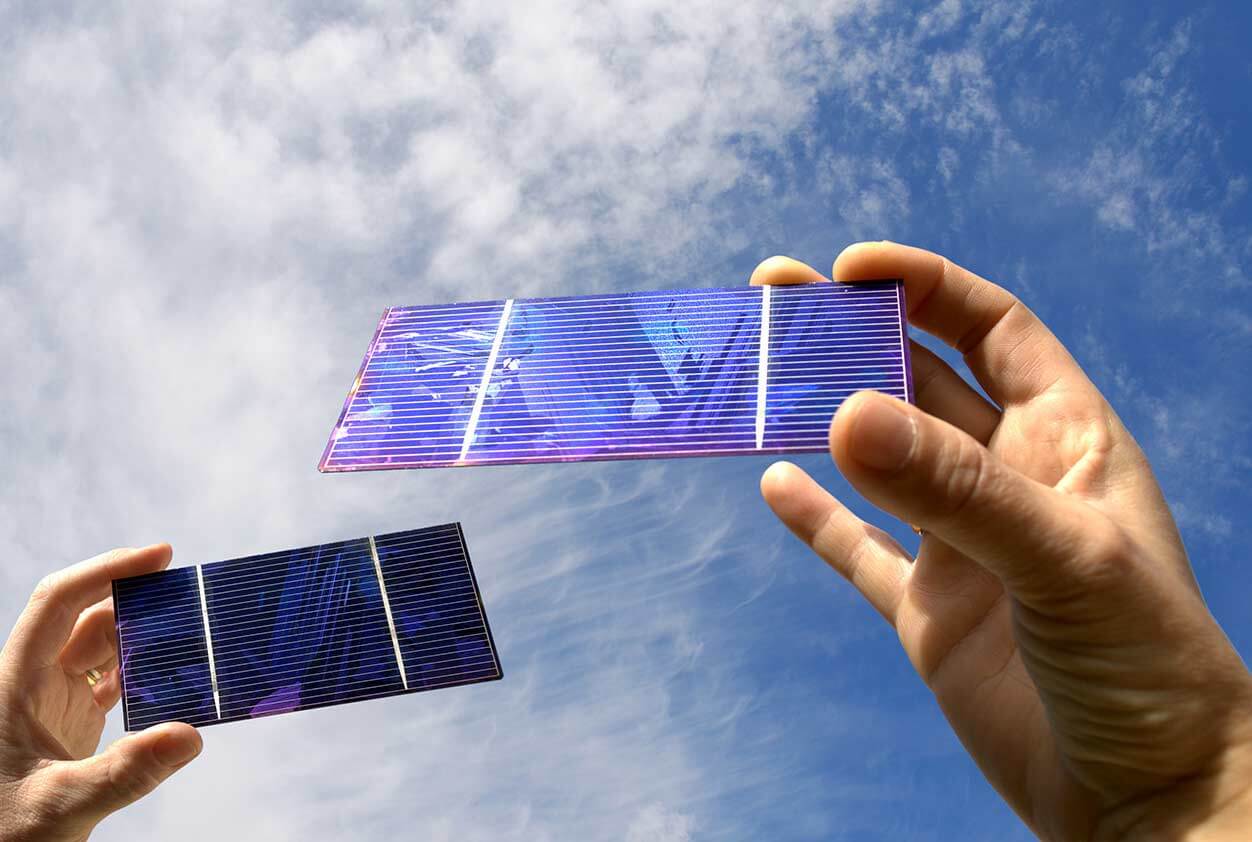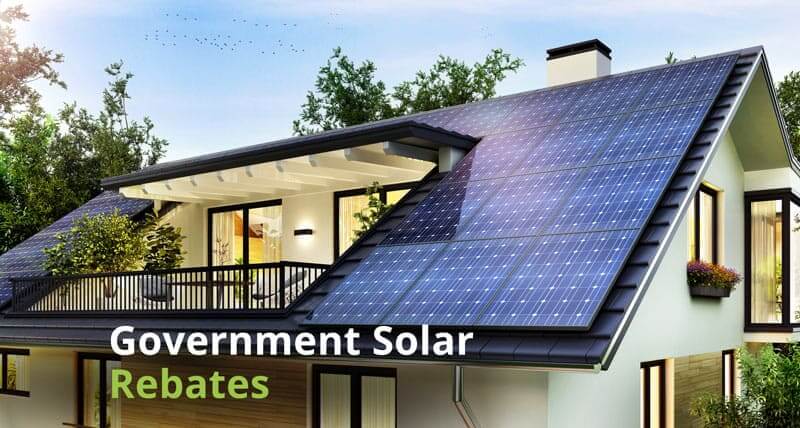Home What is a Photovoltaic Effect?
What is a photovoltaic effect?
The fundamental principle of photovoltaics lies in transforming sunlight, once it’s captured, into electrical power.
The photovoltaic effect is the process that involves two dissimilar materials coming into contact to produce voltage or electricity when exposed to light or radiant energy.
This effect is what ables solar panels to be useful because the photovoltaic cell inside the panel converts the solar energy to electrical energy.

Table of Contents
ToggleHow does the photovoltaic effect work?
The photovoltaic effect is the process wherein the sunlight is converted into electricity through a PV cell. The light absorbed in the cell generates electric energy and the remaining sunlight will be reflected or passed through.
Voltage is created and an electrical current is produced in the material when two dissimilar materials are in close contact with each other and are struck by light. The produced current is called photo-current.
The photovoltaic effect cannot be observed in the photo-current because the electrons absorb energy but they are retained in the substance. This can be observed in solar cells, specifically semiconductors.
Type of semiconductor cells
There are two types of semiconductors found in solar cells:
- p-type
- N-type
Both create a p-n junction when combined. An electric field is formed when these two types of semiconductors are joined together.
This electric field is where electrons move to the positive p-side and holes move to the negative n-side. The intimate contact between the p-type and the n-type is what allows these electrons to flow.
The negatively charged particles can move in one direction in this field and the positively charged particles in another, thereby producing an electric current.
What is the photoelectric effect?
The photoelectric effect is the process of emitting electrons from a surface of a substance that has been exposed to incident light. Incident light is the ray of light that touches a surface, specifically metal.
The electrons present in the metal absorb the light energy and they are emitted. However, for the electrons to be emitted, the light energy should be equal to the energy required by these electrons.
Once the electrons are emitted, they become photo-electrons. The energy of emitted light is independent of photons, which is the energy carried by the incident light.
The energy of photons is directly proportional to the frequency of light. An electron of a surface will be emitted if the energy of the photons is enough to overcome the barrier or the electron binding energy.
If the energy of the photons is not enough, the electron will not be ejected. Electron emission is dependent on the amount of energy one photon carries.
The energy absorbed is used to release the energy from the surface, and the rest is for the electron’s kinetic energy. Ultimately, the electron can be released as a free particle.
Photovoltaic effect vs photoelectric effect
The photovoltaic effect and the photoelectric effect are closely related to each other. Both processes involve the absorption of light which causes the excitation of an electron or a charge carrier to a higher state of energy.
Both phenomena can produce electric potential, or voltage, with the separation of charges, and the light which has to possess sufficient energy to overcome potential barriers for excitation.
What are the differences between photovoltaic effect and photoelectric effect?
Photovoltaic Effect
The main difference between the photovoltaic effect and the photoelectric effect is that the electrons in the photovoltaic effect enter the material while the electrons in the photoelectric effect are emitted in an open space.
The photovoltaic effect is not as difficult as the photoelectric effect to occur. The photovoltaic effect causes the electrons’ movement in different materials while the photoelectric effect emits election in the open space due to the incident light.
The photovoltaic effect occurs when two dissimilar metals are combined in a solution. Meanwhile, the photoelectric effect can be observed in a cathode ray tube with the presence of an anode and a cathode integrated into an external circuit.
While the photovoltaic effect causes electrical current generation, the photoelectric current does not.
Photoelectric Effect
The photoelectric effect occurs when the photons provide sufficient energy to overcome the electron binding energy; the photovoltaic effect happens when the photons provide enough energy to overcome the potential barrier of excitation.
The kinetic energy of the electrons being emitted during the photoelectric effect plays an important role. However, in the photovoltaic effect, it does not have any importance.
Photoelectric is used in imaging technology, studying nuclear processes, and giving theoretical information about the shift of electrons between different energy states in atoms.
But on the concept of the photovoltaic effect, solar cells are employed for photovoltaic energy applications.
The incident light in the photovoltaic effect supplies the energy for the electrons to move from one substance to another to ultimately generate an electric current.
However, the incident light in the concept of the photoelectric effect increases the electrons’ energy and causes them to move in an open space.
Photovoltaic applications
Photovoltaics have the potential to be applied almost everywhere. Advancing technologies allow for PV to be used in ways that can make systems easier and human lives comfortable.
According to the National Renewable Energy Laboratory, photovoltaics (PV) are in this range of applications and locations.
Solar farms
Solar farms consist of so many acres of PV panels. One PV cell is typically small, producing about 1 or 2 watts of power.
PV cells are made of different semiconductor materials and are protected with materials, usually a combination of glass and plastics, to withstand outdoor elements for a long time.
For solar farms, PV panels could go for miles to provide utility-scale power. From tens of megawatts to more than a gigawatt of electricity, these large systems can feed power into regional grids.
Remote locations
There are specific locations where extending power lines for electricity can be expensive, inconvenient, and sometimes even almost impossible.
PV is a great solution for places like these. Through photovoltaics, electricity can be offered in rural homes, villages in developing nations, lighthouses, offshore oil platforms, and remote health clinics.
Stand-alone power
In addition to powering homes and other buildings, PV can also power stand-alone devices, tools, and meters.
Examples of stand-alone devices and tools are traffic signs, parking meters, radio transmitters, emergency phones, water irrigation pumps, stream-flow gauges, remote guard posts, roadway lighting, and many more.
Power in Space
Photovoltaics has been one of the greatest main sources for Earth-orbiting satellites. It has significantly contributed to humanity’s ventures into outer space as well.
PV has supplied power for the International Space Station and surface rovers on the Moon and Mars. Photovoltaics will remain an essential part of space and planetary exploration.
Building-related needs
It can be noticed that there are buildings in which PV panels are mounted on the roofs or ground to supply electricity for the whole building or certain floors.
A building’s structure can be integrated with PV material. Areas like windows, roof tiles, or cladding are examples where PV can be assimilated to serve a dual purpose.
PV can also cover awnings and parking structures for shade and power.
Military uses
Alternative sources of energy are always attractive to the military. Solar energy has been particularly useful and has reduced the military’s dependence on conventional fuel.
With lightweight, flexible thin-film PV materials, soldiers can carry them for charging electronic equipment in the field or remote areas. Its portability and ruggedness are important features for the military.
More than 130 megawatts (MW) of solar photovoltaic energy systems power the Navy, Army, and Air Force bases in more than 31 states and the District of Columbia.
Transportation
Although photovoltaics cannot supply the total amount of energy to power electric vehicles like cars and buses, they can provide auxiliary power. They can help make batteries last longer and power up features like air-conditioning and stereo.
Photovoltaic glass is an emerging technology in PV that supplies augment power to electric vehicles. Because it looks and feels like glass, it can be used for car windows and other glass applications.
PV can also be integrated into sunroofs for onboard power needs or charging batteries. Additionally, lightweight PV is also sometimes used in airplane wings for more power in high-altitude aircraft.
Examples of technologies that use photovoltaics
Compared to batteries, photovoltaic energy is a better option as an energy source for low-power portable electronics like calculators and small fans.
Even though battery-powered devices are more affordable than photovoltaic devices initially, using photovoltaics lowers the cost of the device in the long run since they do not exactly run out of power compared to a battery.
Here are examples of devices and tools that PV can act as an energy source:
- solar battery chargers
- calculators
- fans
- watches
- flashlights
- laptop computers
- navigational aids
- water pumps
- parks in remote regions
- telecommunication
- repeater stations
- remote residences
Advantages of photovoltaic energy
- Photovoltaic energy is 100% renewable and inexhaustible since it relies on solar energy or the sun
- It is a non-polluting type of energy as it does not need to consume fuels or generate waste
- It is modular, making it available for installations ranging from photovoltaic plants on the ground to small roof panels
- It can power batteries that can be put for a later use
- PV is perfect for rural or secluded areas where power lines for electricity are difficult and/or expensive to install and for geographical areas that do not get many hours of sunshine every year
- It is reliable even under harsh weather conditions
- It can last up to more than 2 decades and can remain functional after many years
- PV systems do not require a lot and expensive maintenance; they only need regular inspections and occasional repairs
- It can operate with very minimal noise and mechanical movement
- PV systems are independent in terms of energy production and remain unaffected by utilities
History of the photovoltaic effect
The photovoltaic effect was first demonstrated by Edmund Becquerel, a French experimental physicist, in 1839. He observed light-induced currents in dilute acid and used an electrochemical cell.
Becquerel explained that “the production of an electric current when two plates of platinum or gold immersed in an acid, neutral, or alkaline solution is exposed in an uneven way to solar radiation.”
In his experiment with a solid electrode in an electrolyte solution, he discovered the photovoltaic effect. Silver chloride was placed in an acidic solution, which illuminated when it was connected to platinum electrodes.
Becquerel found that electrical energy or a voltage was produced when the light struck the electrode. He also establish that the electricity produced was stronger in the daylight than in the dark.
Albert Einstein believed that there was a failure by the science of the late 1800s in predicting all the energy streaming from the sun. He suggested that light had a characteristic that had not yet been recognized.
He said that light contains packets of energy which he called light quanta, which are now known as photons. He postulated that the amount of power a photon carries depends on the wavelength of light.
Einstein was able to provide the scientific framework for photoelectricity – the one thing it lacked during the time. His discovery of the electron and the rash of research into its behavior helped the phenomenon become more understandable.
The first US Patent to convert sunlight into electricity was received by William Coblentz in 1913.
In 1954, the first solid-state photovoltaic cells were designed after solid-state diodes and transistors were developed. Photovoltaic applications had then been increasing, as well as their efficiency.
In 1991, enough photovoltaic modules were made to provide 50 megawatts of power. It has been found that the production rate of photovoltaics increase by 20% every year.
Since 1958, photovoltaic cells have been the primary source of power for many satellites orbiting the earth. Within the planet, they are used in very different ways and different locations.
Hungarian-American MIT scientist, Maria Telkes, said, “Personally, I believe that photovoltaic cells will be the most efficient converters of solar energy if a great deal of research and development work succeeds in improving their characteristics.”
Table of Contents
Toggle




